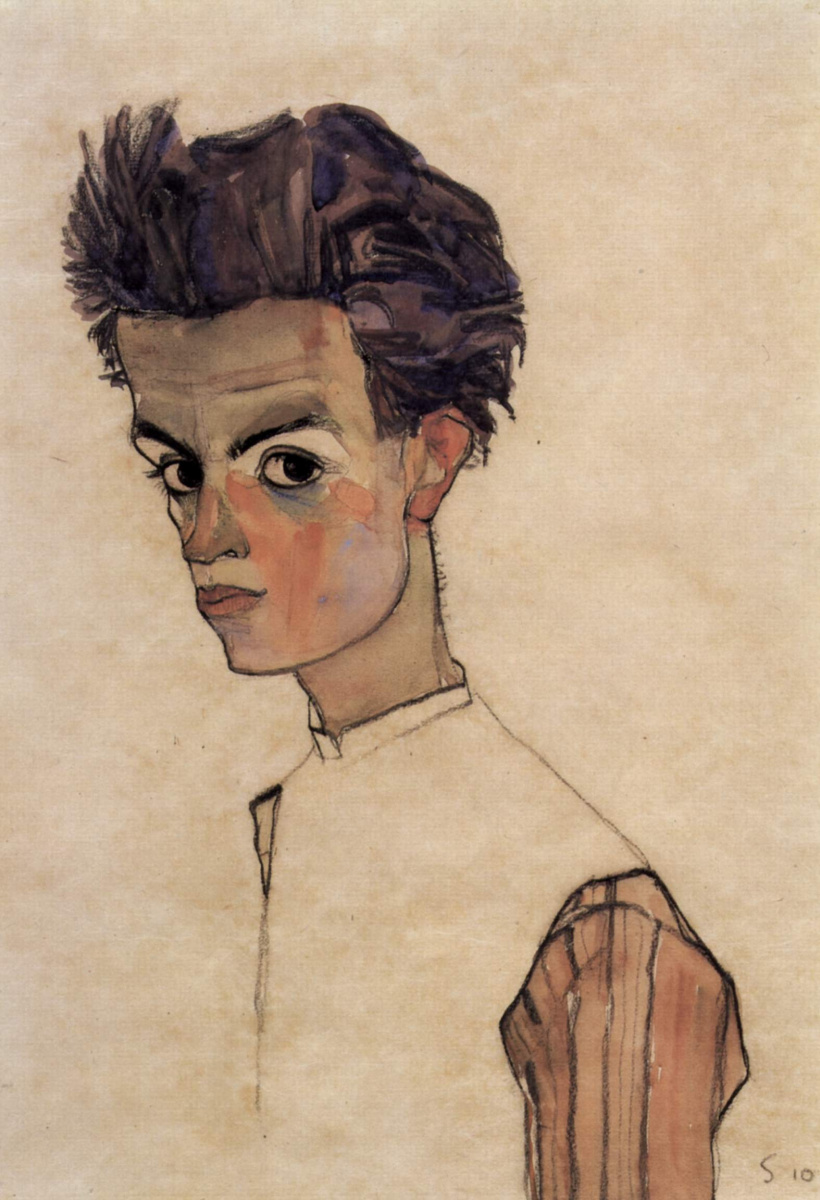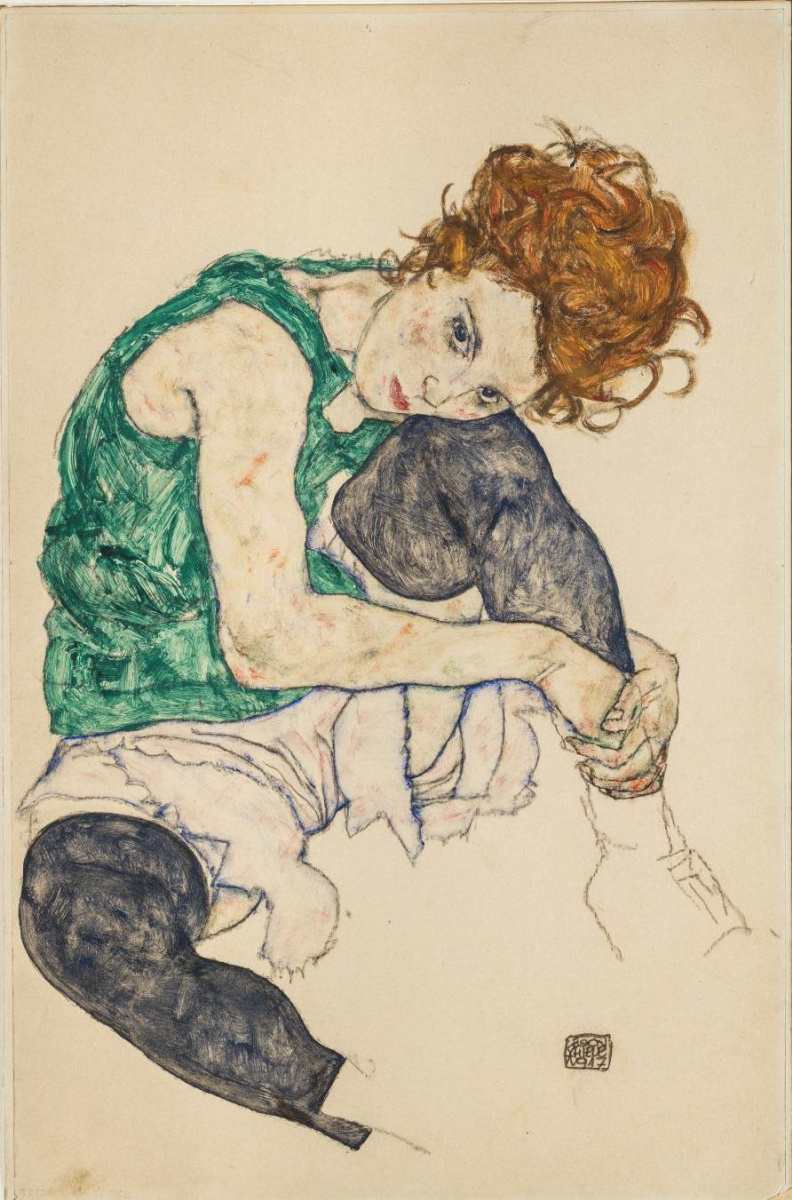Jane Kallir, the world’s foremost expert on Egon Schiele and the author of his catalogue raisonné, is accustomed to being approached by strangers who claimed to have found a possible drawing of an Expressionist artist. But this time it could be worth a fortune.

When the man first sent a blurry image of the work in 2018, Kallir was skeptical. She frequently hears from strangers saying they’ve found an authentic work by Schiele. "Ninety percent of the time they’re wrong," says Kallir, the director of the Galerie St. Etienne in Manhattan, who has been authenticating Schiele drawings and watercolours for over 30 years. "Most of them are fakes—egregious copies."
She asked for a better photo, and months later, when he finally did so, she invited the man to bring the artwork to her gallery for a closer look. She was convinced. "Based on the fluidity and spontaneity of the line, this drawing is, in my opinion, clearly by the hand of Egon Schiele," Kallir’s statement says.
Previously unknown drawing by Egon Schiele turned up in a Habitat for Humanity thrift store in Queens, New York, more than 100 years after the Austrian painter’s death. It was sketched by Schiele in 1918, not long before he died in Vienna at age 28 in the Spanish flu pandemic.
Reclining nude
1918, 19.7×41.6 cm
In his brief career, the prolific artist created several thousand drawings and paintings, and his work was known for its raw depiction of human sexuality.
The drawing depicts a nude young girl reclining, a trademark of the artist’s style (and sometimes scandalous propensity for nudity). "People often fall in love with Schiele because he expresses the typical longings and fears of adolescence, the coming to terms with sexual desire and personal identity," Kallir says. "Schiele is also one of the greatest draughtsman of all time."
Kallir verified that the drawing depicts "a girl who modelled for Schiele frequently, both alone and sometimes with her mother, in 1918" and was, in fact, genuine. The expert even placed the work alongside two others that may have been drawn in that same modeling session. Jane observed in her authentication of the drawing the specific cream wove paper and the type of black pencil used by Schiele.
Self-portrait
1910, 44×30.5 cm
Egon Schiele is one of the most famous artists of the modern period in Austria, who showed talent from an early age and was mentored by the great Gustav Klimt. His corpus consisted of portraits and self portraits often nude
and in contorted, erotic positions, as well as landscapes.
"Torso of a Nude" (1918) by Egon Schiele from the collection of the Metropolitan Museum of Art. Perhaps the same model posed for this drawing.
Several things about the drawing peaked Kellir’s curiosity. First, the woman in the drawing herself is oddly posed, with her ribs protruding. Schiele was known for such poses. Secondly, the kind of ink and paper used were common in Austria in the early 20th century, which is the period in which the drawing was done. The girl is nude, and even her nose gave Kellir a clue that she was assessing a true Schiele.
If you look at the way this girl is lying on her back, and you look at the foreshortening both on the rib cage and on her face, and the way you see that little nose pointing up—think about how difficult that is to do [.. .] There are very few people in the history of art who can draw like that.
The drawing belongs to a series of 22 other works, two of which are believed to have been painted on the same day as the new piece. Those other two drawings are held by the Metropolitan Museum of Art and the Leopold Museum in Vienna, Austria.
The drawing belongs to a series of 22 other works, two of which are believed to have been painted on the same day as the new piece. Those other two drawings are held by the Metropolitan Museum of Art and the Leopold Museum in Vienna, Austria.
The man who found the drawing was described by Jane Kallir as a part-time art handler who often visits second-hand shops. "He's got some art background—an eye," she says. According to Galerie St Etienne statement, he prefers to remain anonymous.
"It looked old and out of shape but I loved the drawing. I loved everything about it, even the smell of that old vintage paper," the man wrote according to Habitat for Humanity. "I have found other valuable pieces, but not like the Egon Schiele drawing. When I saw the drawing, it reminded me of the way I enjoyed sketching, so it got my attention instantly. I asked for the price and took it home. I didn’t think much of it because I was more drawn to the way it looked."
The price was low, the man says—less than $80, which is a tiny fraction of what it is now worth. He didn’t realize what he had found.
The artwork is now for sale in Kallir’s gallery with an estimated value of $100,000 to $200,000 and on display through 11 October as part of an exhibit called "The Art Dealer as Scholar", which features works by Schiele, Käthe Kollwitz and Alfred Kubin. The show also includes an impression of Schiele’s 1918 lithograph
Girl and a drawing by the artist of the girl’s mother.
The man said he will donate a portion of his proceeds to Habitat for Humanity when it sells, a non-profit organisation that builds and repairs homes for people in need.
"We are ecstatic!" Karen Haycox, chief executive of Habitat for Humanity New York City, told The Art Newspaper. "And, maybe a little bit in shock but ultimately really happy for all involved. "I can’t help but think that were it not for the Habitat NYC ReStore, this piece of art history might have ended up in a landfill, lost forever."
So, keep your eyes open, cause you never know what you’ll find on a thrift store shopping excursion.
Based on materials from The Artnewspaper, Artsy.net, CNN Style.


















